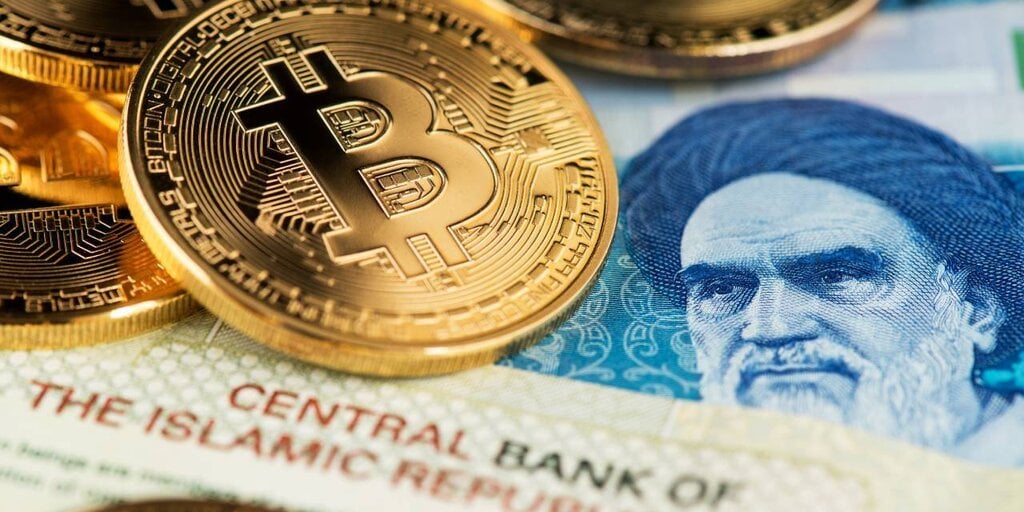Iran’s Struggling Bitcoin Mining Industry: A Werewolf Hunt in Sheep’s Clothing
Securing stable electricity is a low priority in Iran for digitally unsupervised activities. Consequently, Iran’s large-scale Bitcoin mining operations are overwhelmingly underground and difficult to track, driven by immense domestic economic pressures.
Performance Over Time
According to the University of Cambridge’s Center for Alternative Finance, Iran’s share of the Bitcoin hashrate was 7.5% in March 2021. This figure collapsed dramatically, dipping below 0.1% by early 2022.
Estimates of Production
Estimates concerning Iran’s Bitcoin output vary significantly. Founder and CEO of Mastermined, Andrew Scott Easton, suggests approximately 60,000 BTC (valued at $6.4 billion). Co-founder and CEO of mining platform Sazmining, Kent Halliburton, estimates a higher range, between 100,000 and 200,000 BTC (worth between $10.7 billion and $21.4 billion). However, researcher Rajat Ahlawat of Crystal Intelligence dismisses precise quantification, highlighting the opaque and largely illicit nature of Iran’s mining sector.
Motivations and Challenges
Iran has turned to cryptocurrency mining and trading primarily out of economic necessity. Decades-long, severe international sanctions and hyperinflation eroding the value of the Iranian currency since at least 2019 are key drivers.
Mining operations face immense hurdles. Electricity prices are among the highest globally, and licensed operations face even steeper tariffs. As Ahlawat notes, “Let’s say the iron and steel industry—they use a lot of electricity… but the tariffs that the iron and steel industry pays are lower than what [crypto] miners pay.” This disparity forces many operations underground to avoid exorbitant electricity bills.
Moreover, legal mining requires selling mined Bitcoin directly to the central bank to avoid international sanctions, effectively ending any financial benefit for the miner and disincentivizing local participation.
The Underground Sector
The vast majority of mining is illicit. It is estimated that 85% of mining activities, by volume or power, operate without authorization. These illegal operations often leverage free or heavily subsidized electricity sources, including reportedly schools and mosques.
The electrical load from these hidden operations contributes to national grid instability, causing blackouts. Distraught Iranian state electricity provider Tavanir reportedly offers rewards for information leading to the shutdown of illegal crypto farms.
Tracking the Untraceable
A crucial challenge in estimating Iran’s Bitcoin holdings is the very nature of the technology. Consensus among reports estimates total illicit operations account for roughly half (500 kW) of Tehran’s total electricity draw.
Crucially, the Bitcoin network itself does not directly reveal a coin’s geographical origin. This lack of traceability allows Iranian actors – individuals and potentially state entities – to mine and hold Bitcoin without triggering sanctions.
Tehran’s Cryptocurrency Regulatory Gamble
Recognizing the economic potential and the widespread appeal of mining despite sanctions, Iran began issuing legal permits for crypto mining activity. However, the high cost structure presents significant challenges to profits for licensed operators. Reports indicate regulators have handed out thousands of licenses since then.
The Nuclear Plant Speculation
The recent US airstrike on Iran’s Fordow nuclear facility drew attention to Bitcoin mining due to concerns and reports that certain infrastructure provided by the IRGC allows for illicit mining. While unconfirmed, some monitoring services suggested significant hashrate fluctuations around the time of the strike, fueling speculation including that Iran possesses a mining operation at Fordow.
However, experts caution against taking short-term hashrate drops at face value, noting the volatility of such metrics. A mining firm disputed the connection specifically to Fordow. Analysis concludes that while the government, particularly the IRGC, is significantly involved in mining, specific confirmation for any single, large-scale operation like one at Fordow remains speculative.
Concluding Thoughts
The precise volume of Bitcoin mined in Iran remains elusive. Estimates range widely from hundreds of thousands to two million dollars in future gains, reflecting the secretive nature and inherent difficulties in assessing this vital aspect of the nation’s underground economy. Admittedly, knowing exactly how much Bitcoin Iran has mined isn’t crucial. What’s clear, however, is that the energy demands of a digital asset created by Western financial institutions within a sanctioned and economically suffering nation like Iran are bound to cause friction.












